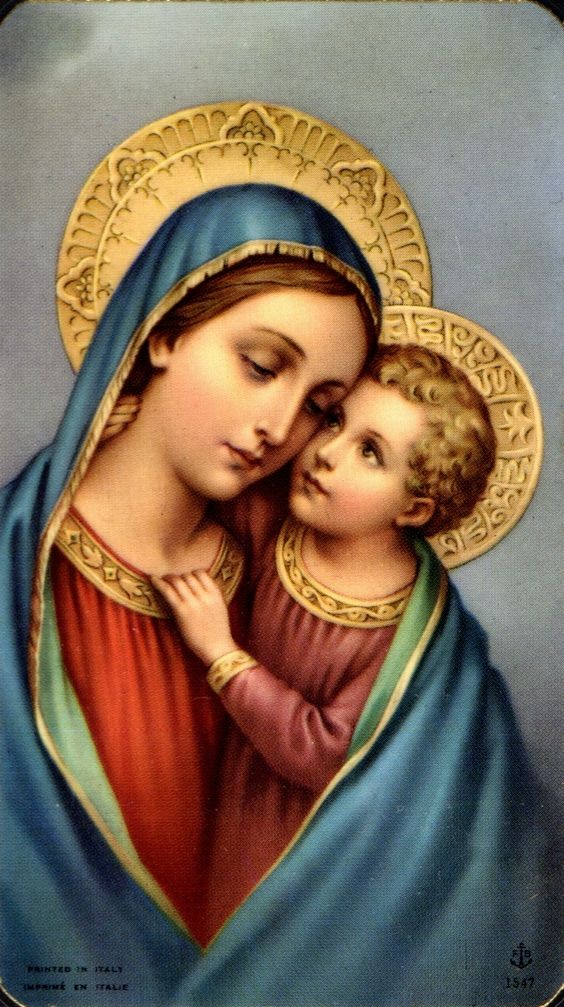The Queen: Editorial: The Most Accessible of Mothers
Fr. J. Patrick Gaffney, SMM
The Most Accessible of Mothers
H oliness, for many people, seems to imply strange, or even spooky.
No young boy wants to be called a Holy Joe for it is the equivalent of sissy, the opposite of macho. For many the word holiness is chock-filled with negative connotations. A holy person is a loner, a serious, downcast person, one never seen at parties or certainly never breaking out into a belly-laugh!
It is not surprising, then, the word holiness has come to mean distance from other people, even from the realities of life. Someone who is holy is considered above (if not against!) the human joys of marital love, or a pizza and beer party. Totally undisturbed, the saint floats through this life, really not experiencing its joys or sorrows.
Holiness
This caricature of sanctity – which is fed by horribly exaggerated Lives of the Saints and iconography which often depicts the saint as someone unreal – has serious effects on our understanding of Jesus. Based often on the erroneous assumption that matter is evil, some Christians have turned Our Lord into nothing more than a charade of a human being. Some people go so far as to deny that He ever really experienced thirst, hunger, loneliness, temptations, human emotions.
Such a heresy (called docetism) has been constantly condemned by the Church. But no matter. For some, it seems to be part of the glory of Jesus to abstract Him from the real troubles; to remove Him from difficulties and pains of this human life! This concept of holiness destroys redemption itself. Jesus is holy for He is Infinite obedience to the Father, an obedience which remains firm even in the midst of truly experiencing humiliation, betrayal, desolation, the Cross. (cf Letter to the Hebrews, 4:15,5:2).
Understanding of Our Lady’s Role
Our Lady is also caricatured by this misunderstanding of holiness. Since she is truly the Mother of God, since she is the Immaculate Conception, then – so many erroneously reason – she really did not know the troubles or the joys of this life. Some have tried to deny that she ever knew the pangs of hunger, cold, or the utter fatigue of daily work. Some deny she ever experienced discouragement, misunderstanding, or that she must have been pained when the town people called her Son “crazy”. (cf Mk 3:21). This is the heresy of “Marian docetism”. The denying of the reality of the humanness of Mary because holiness and humanness, so they say, are contradictory.
We have, to use the rather ugly jargon of contemporary theology, stained glassed Mary, we have pedestalized her in the sense that – because of her grandeur she is not one who ever truly experienced our human miseries but was always filled with the beatifying glory of God. Mary is, therefore, distant, if not rather cold. Her great glories have withdrawn her from the miseries of human life. She really does not understand my problems. Rather, standing on a pedestal which pierces through the sky, she looks down upon us with astonishing and rather shocked wonderment at our failings and troubles.

Editorial
From time to time, The Queen will republish Editorials or create new Editorials on various topics.
For holiness brings her close not only to God, but to the family of God, the human race. We must, insists Saint Louis de Montfort, open our hearts to the loving, feisty, influence of this woman of our race. She leads us to a truly holy life, one with Christ Jesus, strong in obedience to God’s Will . . .
Return to The Queen: Articles
Holiness . . .
This is clearly not the Catholic understanding of Mary. It is definitely not the thought of Saint Louis de Montfort. Following the teachings of the Church, Father de Montfort constantly extols the greatness of Mary. However, for this very reason, he insists upon her deep, sincere, understanding, loving involvement with all her brothers and sisters. He will insist that holiness never distances us from one another – rather, it brings us closer. It is sin which hardens us, sin which pedestalizes or stained glasses us!
. . . Brings Us Closer
After Jesus, there is no one more real, more human – in the best sense of the term involved with the joys and sorrows of this world than the Immaculate Mother of God. For holiness humanizes us by the very fact that it divinizes us! Is not God Love Itself? Has not God chosen from all eternity to be for us? Then to be divinized, to be made holy, to share in the life of the Incarnate Beloved, Jesus the Lord, is to be ipso facto so understanding, so simple, so approachable, so loving, so sensitive, so sympathetic, so identified with the poor, the lonely, the oppressed. (cf. Mary’s Magnificat, Lk 1:46-55).
It is the horrible caricature of holiness which has turned people away from Mary; and more sadly, even from her Divine Son, Jesus. The real Mary is so close, so understanding. She is so approachable, so loving, so intertwined with our lives; precisely because she is the Immaculate Mother of God. For holiness brings her close not only to God, but to the family of God, the human race. We must, insists Saint Louis de Montfort, open our hearts to the loving, feisty, influence of this woman of our race. She leads us to a truly holy life, one with Christ Jesus, strong in obedience to God’s Will, brave in our fidelity to the Body of Christ, the church, deeply and lovingly involved with all our brothers and sisters, especially the poor and the outcast.


